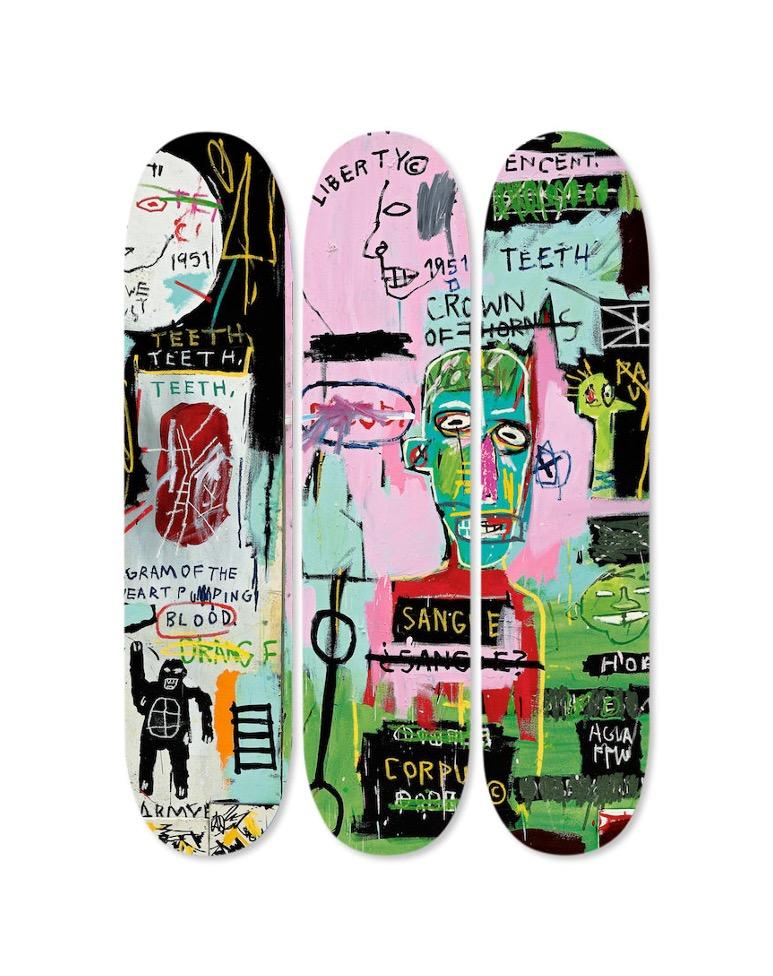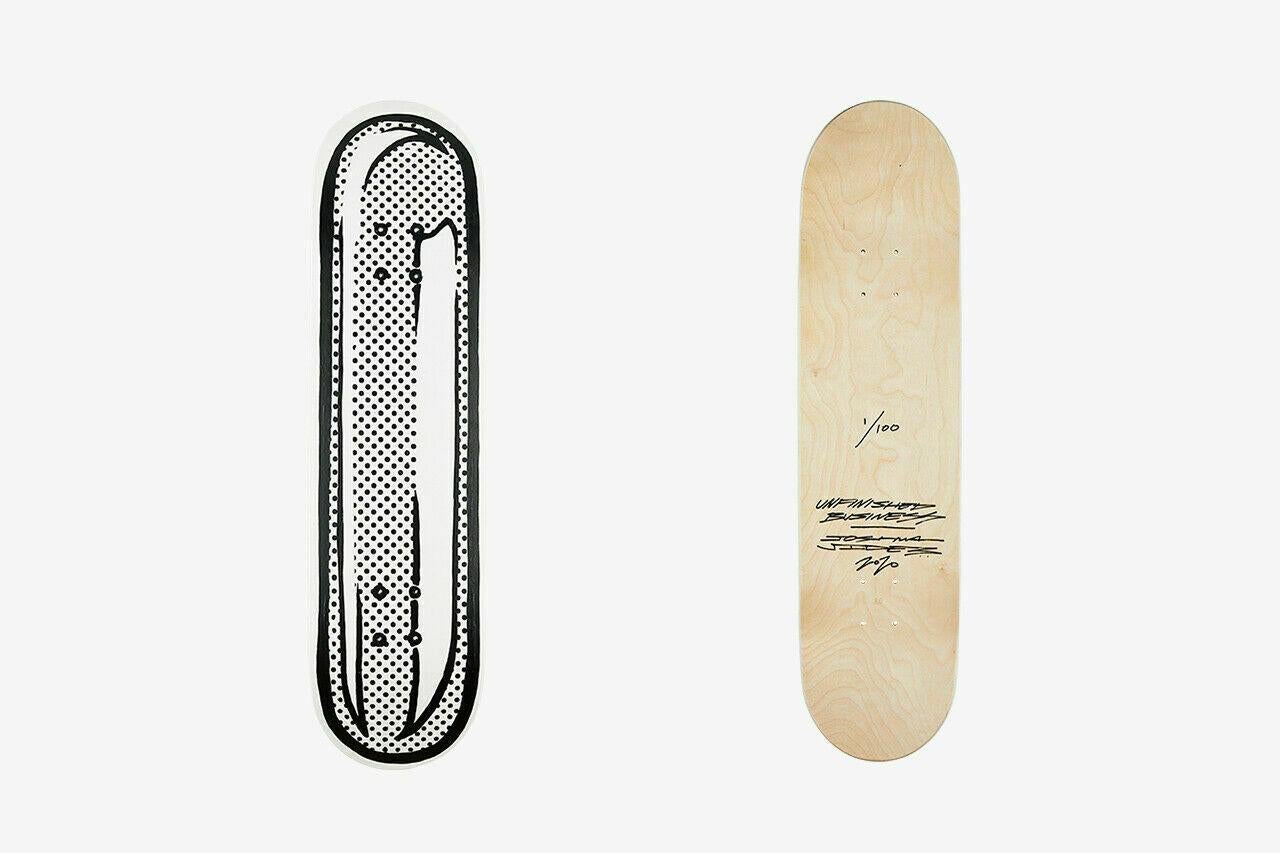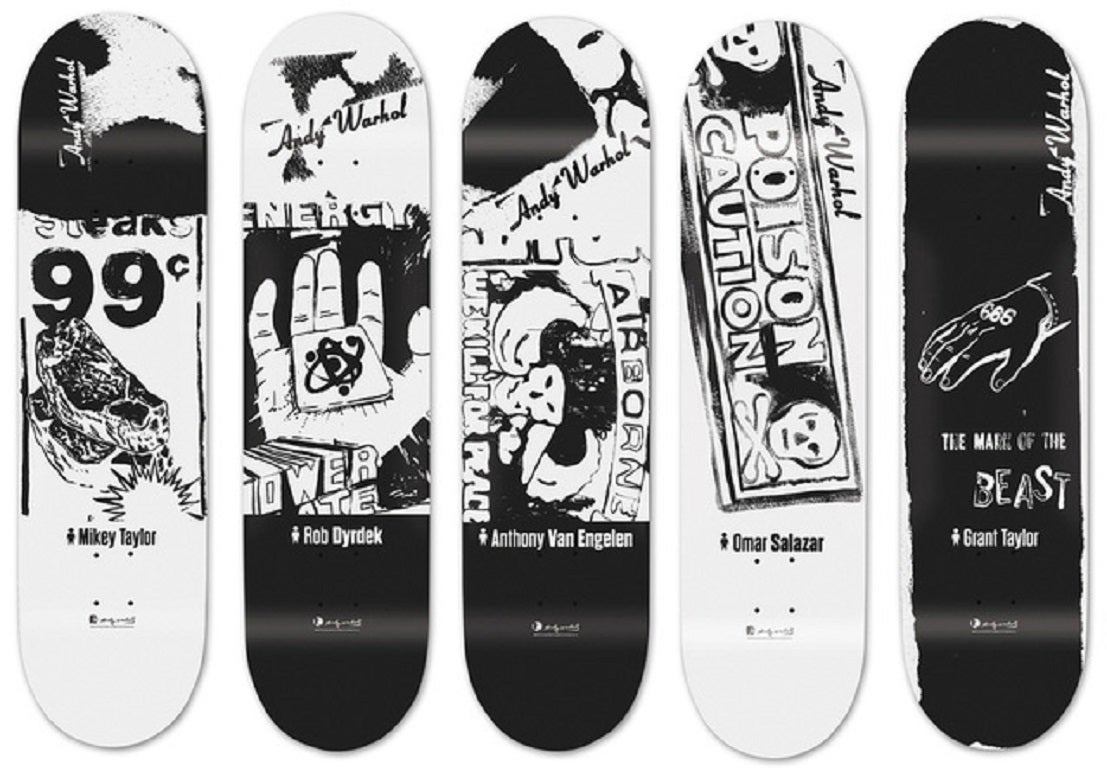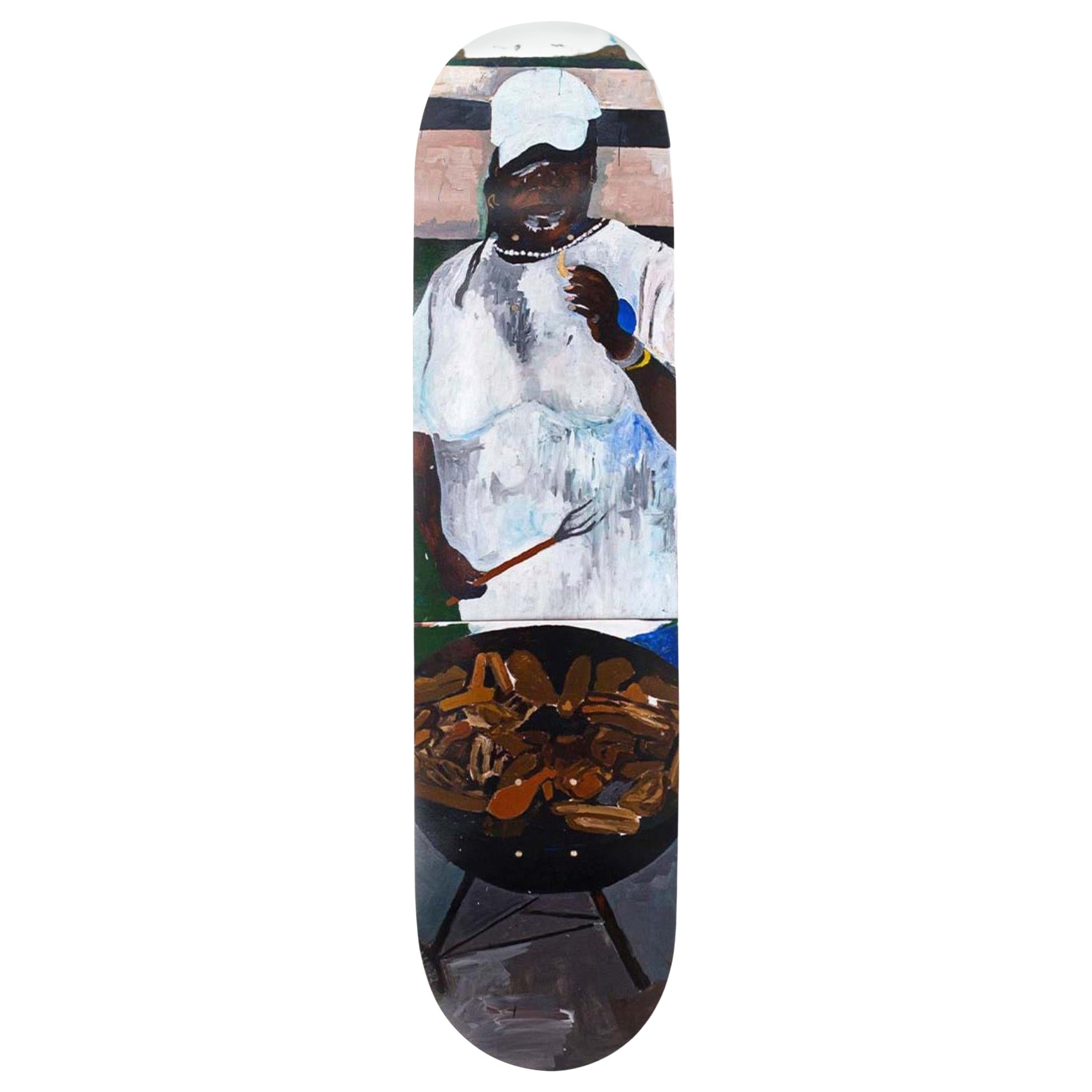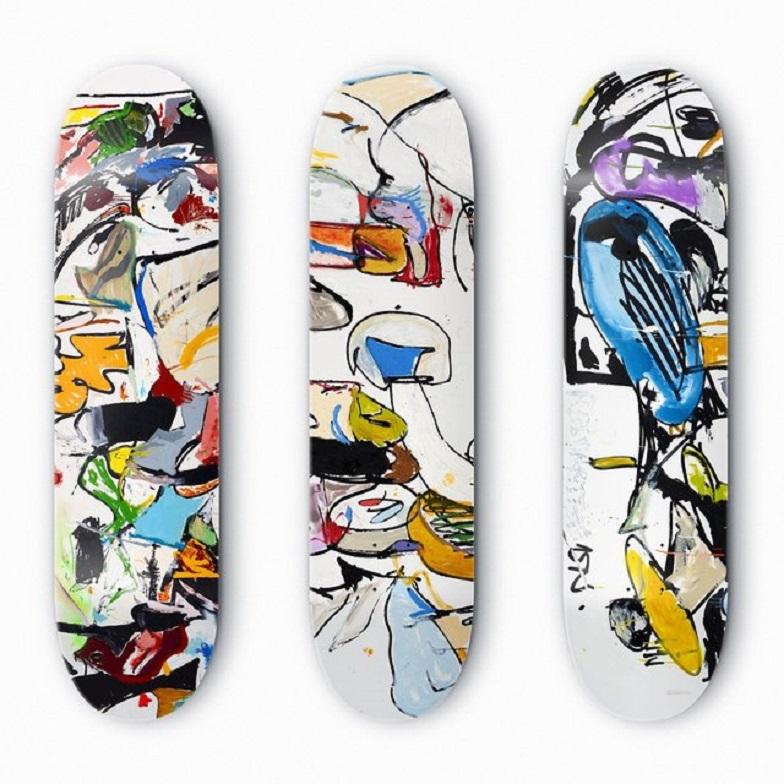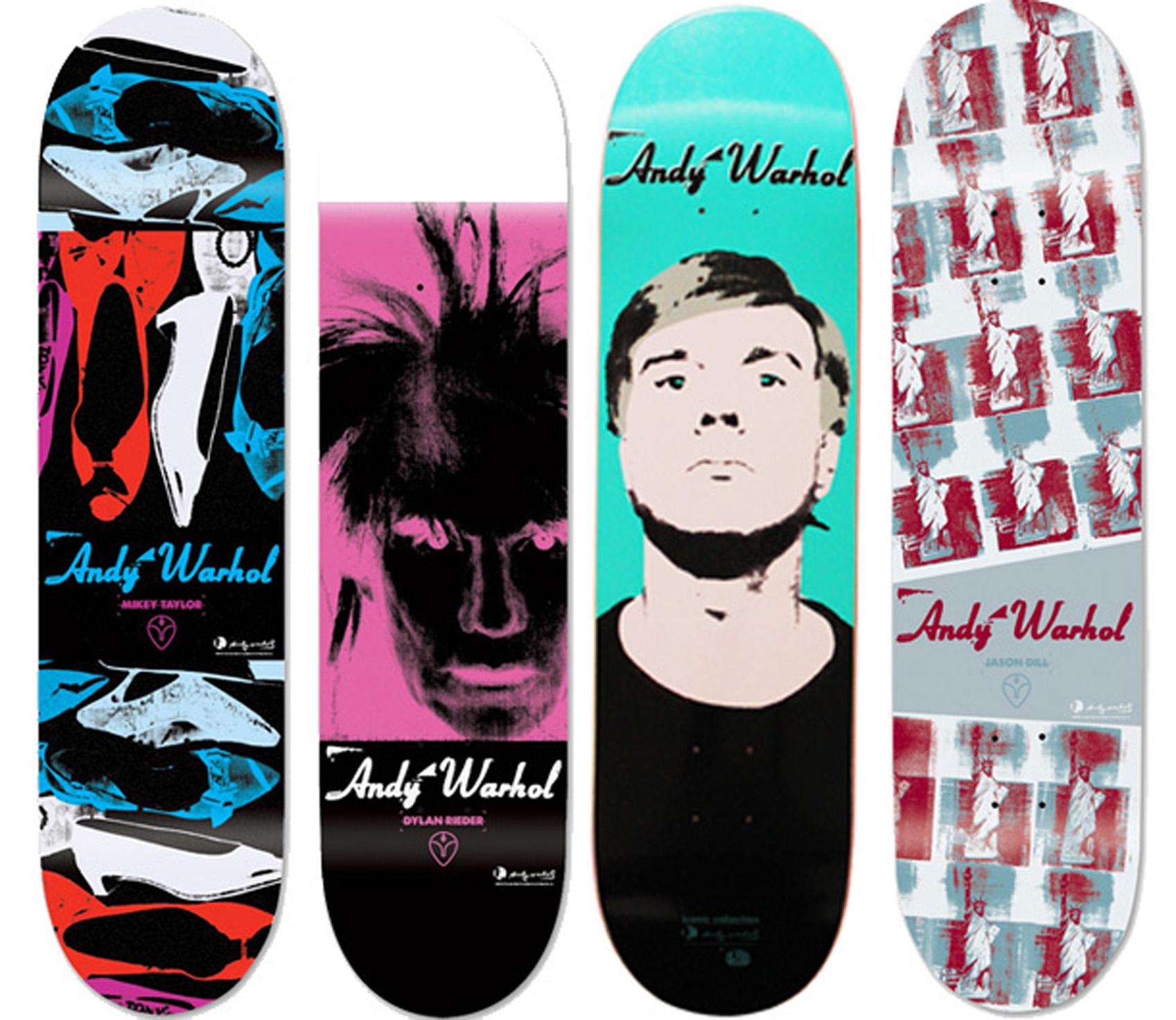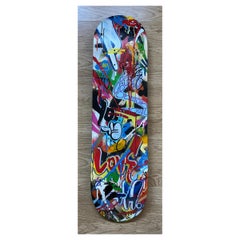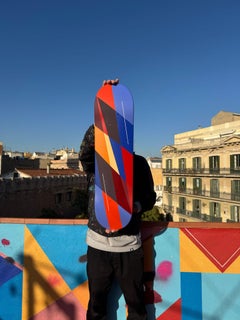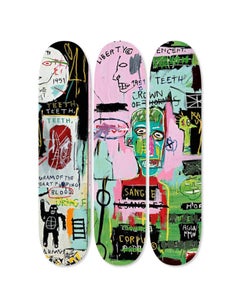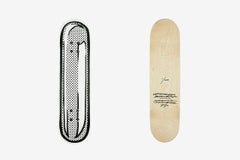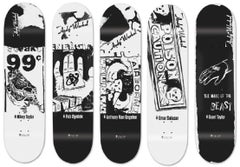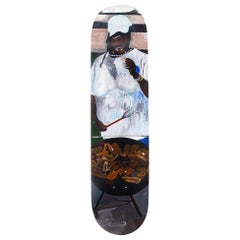Want more images or videos?
Request additional images or videos from the seller
1 of 2
SFHIRWanted - Skatedeck2020
2020
$1,200
$1,50020% Off
£907.49
£1,134.3620% Off
€1,039.47
€1,299.3420% Off
CA$1,681.49
CA$2,101.8620% Off
A$1,835.62
A$2,294.5220% Off
CHF 966.48
CHF 1,208.1020% Off
MX$21,988.59
MX$27,485.7420% Off
NOK 12,360.88
NOK 15,451.1020% Off
SEK 11,285.69
SEK 14,107.1120% Off
DKK 7,765.12
DKK 9,706.4020% Off
About the Item
Plaster and resin on skateboard painted with spray, acrylic, and pencil
- Creator:SFHIR (Spanish)
- Creation Year:2020
- Dimensions:Height: 31 in (78.74 cm)Width: 7.6 in (19.31 cm)
- Medium:
- Movement & Style:
- Period:
- Condition:
- Gallery Location:New York, NY
- Reference Number:1stDibs: LU171629955672
About the Seller
5.0
Vetted Professional Seller
Every seller passes strict standards for authenticity and reliability
Established in 2018
1stDibs seller since 2022
49 sales on 1stDibs
Typical response time: <1 hour
- ShippingRetrieving quote...Shipping from: Madrid, Spain
- Return Policy
More From This Seller
View AllOriginal Skatedeck by Martin Whatson (Street Art, Graffiti)
By Martin Whatson
Located in New York, NY
Original Hand-Painted Skatedeck
Artist: Martin Whatson
78 x 20 cm
Year: 2021
Category
2010s Street Art Mixed Media
Materials
Screen
$5,440 Sale Price
20% Off
Salt & Pepper Skatedeck by Slomo
Located in New York, NY
Spray Paint on a wooden skate deck
32 × 8 inches
Signed with stencil
Category
2010s Abstract Abstract Paintings
Materials
Wood
Love to Paint Vandal
By And Wot
Located in New York, NY
Paint and ink on OSB board with raised wood 3D stencil character.
Artwork size 80x40cm
Edition of 1 (unique)
White or black wood stain frame (Please message to specify)
Category
2010s Street Art Mixed Media
Materials
Acrylic
OsGemeos - Skatedeck
Located in New York, NY
Skatedeck Museum of Graffiti, 2023
Offset lithograph on maple skate deck
31 x 8 inches
Category
2010s Street Art Prints and Multiples
Materials
Lithograph
Roller 48 by DeGrupo
Located in New York, NY
Acrylic and Aerosol
Original comes framed in a wood frame
13 x 17 x 1.5 inches
Signed by DeGrupo
Category
2010s Street Art Portrait Paintings
Materials
Spray Paint, Acrylic
$1,600 Sale Price
20% Off
Roller 47 by DeGrupo
Located in New York, NY
Acrylic and Aerosol
Original comes framed in a wood frame
13 x 17 x 1.5 inches
Signed by DeGrupo
Category
2010s Street Art Portrait Paintings
Materials
Spray Paint, Acrylic
You May Also Like
In Italian Skateboards Set of 3
By Jean-Michel Basquiat
Located in Central, HK
The Skateroom x Estate of Jean-Michel Basquiat
In Italian Skateboard Triptych, 2014
7 ply Grade A Canadian Maple wood (Set of 3)
31 1/2 × 7 9/10 in 80 × 20 cm
Open edition
Licensed...
Category
2010s More Art
Materials
Wood, Maple
Unfinished Business SkateDeck
Located in Draper, UT
Joshua Vides, Unfinished Business Skate Deck in original packaging.
Category
2010s Street Art Mixed Media
Materials
Wood
Ads Series skateboards set of 5
By Andy Warhol
Located in Washington , DC, DC
Ads Series skateboards set of 5
Category
21st Century and Contemporary Contemporary More Art
Materials
Screen
The 4th Skate Deck by Henry Taylor
By (After) Henry Taylor
Located in Jersey City, NJ
The 4th is released in a limited edition size of 100. Based on a 2012 13-feet tall piece composed of two stacked panels. As Tatiana Istomina describes the work, ‘The upper [panel] shows the monumental form of a black woman in a white T-shirt; she holds what looks like a potato chip...
Category
2010s Contemporary Art
Materials
Wood
SIGNED ed. 100 Skateboard set of 3
By Eddie Martinez
Located in Washington , DC, DC
SIGNED ed. 100 Skateboard set of 3
Category
21st Century and Contemporary Contemporary More Art
Materials
Maple, Plywood, Screen
Skateboard set
By Andy Warhol
Located in Washington , DC, DC
Skateboards made in conjunction with the Estate of Andy Warhol
Category
21st Century and Contemporary Contemporary Prints and Multiples
Materials
Wood, Screen
$2,850
More Ways To Browse
Christo Umbrella
Dali Rembrandt
Damien Hirst Cherry Blossom
De Poilly
Dinan Chighine
Engravings Of Venice
Fin Dac Art
Formula 1 Car
Framed Duck Print
General Dynamics Poster
General Dynamics Vintage Poster
George Washington Signed
Gerald Laing Pop Art
German Fighter Plane
Golda Meir
Henry Takemoto
Howard Behrens Giclee
J Davis
